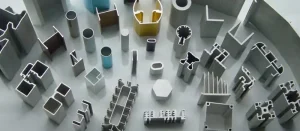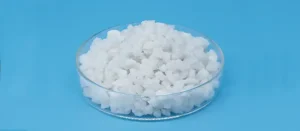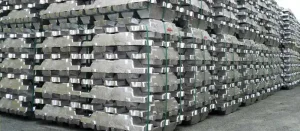Introduction
Aluminum is the most produced and used metal in the world (excluding steel), and its usage is greater than all other non-ferrous metals combined. Aluminum is a special metal that can be used in many different industries, such as aerospace, shipbuilding, transportation, military, construction, electrical equipment, and food packaging. It is getting a lot of attention worldwide and is sometimes referred to as the metal of the 21st century.
Due to the increasing consumption and the growing need for aluminum, a suitable field has been provided for investment in the development of the aluminum industry. The need for aluminum in the domestic market will reach about 450,000 tons at the end of the fourth development plan, and since the added value of the production of this metal is high in terms of its energy consumption, the development of aluminum industries has a special place in the economy and industry.
The added value of aluminum is five times that of steel. Increasing non-oil exports and creating new job opportunities are of great importance in the country’s fourth development plan, and with serious attention to the aluminum industry, valuable steps will be taken in this direction.

Aluminum industries use a lot of energy, so countries with a lot of aluminum industries are called “energy bank.” Aluminum producers are trying to find ways to use less energy and move their factories to places where energy is cheaper. Countries with lots of oil, like those in the Persian Gulf, are good for investing in aluminum industries because they have a lot of energy.
The Persian Gulf will soon become a major center for the aluminum industry because Bahrain, Dubai, Saudi Arabia, and Qatar have set up recycling factories and have plans to expand this industry in the region. Right now, Dubal and Alba’s companies rank third and fourth as aluminum suppliers in the Asian market. Bahrain and the United Arab Emirates are ranked as the 10th and 11th countries in the world for producing aluminum.
Iran has been trying to grow this industry in the country in the past. They have taken different actions to get materials, but they haven’t been very successful. For instance, money was put into Guinea over the past 20 years, but it has not been successful because of various reasons and the absence of in-depth studies by experts.

Aluminum is one of the basic non-ferrous metals, very light and strong. Malleability, flexibility, excellent conductivity, and anti-rust property are the ideal features of this alloy. This malleable metal is widely used in various industries such as automotive, construction, military, and aerospace industries.
Due to access to gas and energy reserves, our country has a suitable position for investment in Iran’s aluminum industry. The added value of this metal is 5 times that of steel; Its foreign exchange earnings from exports have increased and created a large number of jobs. For this reason, it is very important in development programs.
Challenges of the aluminum industry in Iran
Currently, the Iranian aluminum industry is dealing with challenges in the upstream sector. These challenges include rising energy prices, fluctuations in the global price of aluminum, costs of production and raw materials, and the impact of sanctions. The quality of the work in making products also matters for the later part of the production process. These are the situations where we need to be very careful and use the right plans to make Iran’s aluminum industry better.
According to studies, aluminum production in Iran does not have a production advantage due to exchange and non-exchange costs. The production cost of each dollar of aluminum ingot is more than one dollar. Iran does not have a relative export advantage in the upstream production of the aluminum industry. But in the downstream rings after the aluminum ingot stage, it has the greatest relative advantage. For example, in the field of aluminum powder and products made from it, there is a lot of growth potential.
The main materials used in making aluminum in Iran and around the world are bauxite, alumina, anode, and cryolite, as well as primary and recycled aluminum.
Aluminum comes from a material called bauxite, which is also known as aluminum oxide or aluminum ore. Alumina is formed when bauxite is processed, and aluminum is obtained during the following stages.

Most of the aluminum in the world comes from bauxite. Bauxite is changed into liquid aluminum by using electricity and then shaped into ingots. This method requires more energy and money compared to the second method. The goodness of bauxite relies on how much time has passed, what kind of technology was used, the economic and political situation, and how the bauxite was extracted.
Aluminum powder is one of the downstream products of the aluminum industry. This product is produced in two forms: oxide powder and dark aluminum powder or flash powder. The applications of aluminum powder are wide due to its special features; In the construction of these industries, they use this powder:
- Solar panels
- Production of refractory and refractory materials
- Production of lightweight concrete
- Incendiary devices and explosives
- Rocket and its solid and liquid fuel
- Metallurgy
- A substance combined with other alloys to melt
- A thin covering layer on the parts
- Electronics industry
- Paint industry
- The automotive industry
- Makeup material
- Anti-corrosion coating
- Medicine and pharmaceuticals
- Waterproof fabrics
- The catalyst
Today, Iran is considered the 18th producer of aluminum in the world, and based on the vision document of 1404, the production of 1.2 million tons of aluminum ingots is on the agenda. In 2014, the primary aluminum consumption in Iran was about 300,000 tons, and the per capita consumption of aluminum in Iran with a population of nearly 80 million people is about 4.3 kg.

It is predicted that the amount of production in 2025, taking into account the population of 87 million people, will reach 900 thousand tons and the per capita consumption of this silver metal will reach 11 kg. In other words, a 10% annual growth in per capita consumption is predicted.
Iran is in 22nd place worldwide for making 250,000 tons of alumina. Iran needs 1,300,000 tons of alumina every year to produce 750,000 tons of aluminum ingots. In the 1404 vision, Iran wants to produce aluminum ingots and therefore needs 2.4 million tons of alumina.
Final point
Iran is a developing country and has short-term and long-term plans in various industries. The aluminum industry plays an important role in development and production plans. The current programs of the country are around the construction industry, food, automobile manufacturing, aircraft manufacturing, electricity and electronics, and many other things.

All of these things are chances for aluminum companies in Iran. Manufacturers improve the quality of their products by using the finest aluminum and metal powder. By doing this, Iranian goods can compete with other countries products in global markets and also help the domestic industry to grow.




